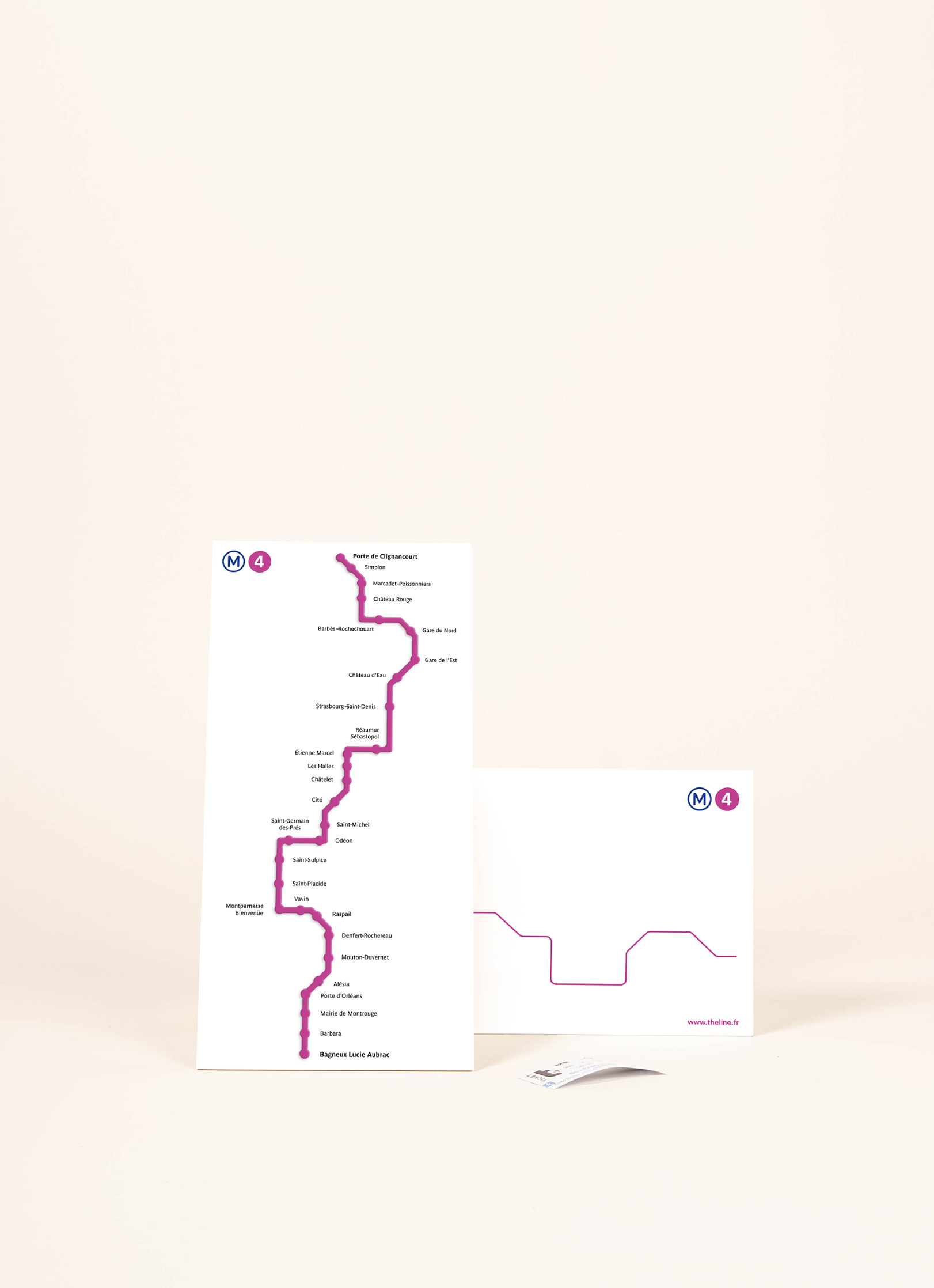Line 4
The Line x RATP la ligne
We have depicted the route of line 4 of the Paris subway and its 27 stations.
With this new format, it is possible to stick, magnetize and even place the line anywhere thanks to its cardboard support on which the names of the stations appear.
The Line x RATP is made in France.
Find out more about Line 4Any order placed before 11:30am (UTC+1) is shipped the same day (except weekends).
Delivery in France in 2-5 working days.
Shipping costs offered in relay points in France.
Indications

-
1.5 mm thick steel line
-
To be wall fixed with 3 nails
-
Inside and outside
-
Super easy
-
Start by nailing the middle of the line, then simply adjust the level
-
Not suitable for brick or concrete walls
About Line 4
The first transverse north-south line opened in 1908, it was also the first to cross the Seine underground, which required spectacular work. In particular, the nature of the ground meant that it had to be frozen using refrigeration plants in order to dig the tunnel under Place Saint-Michel. Line 4 will remain in Paris between the Porte d'Orléans and Porte de Clignancourt until 2013, when it will be extended to Montrouge, before reaching Bagneux in 2022. It is the only line in the network that connects with all other lines!




